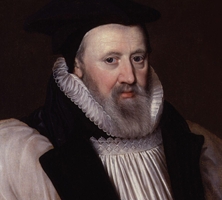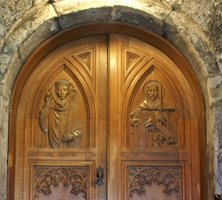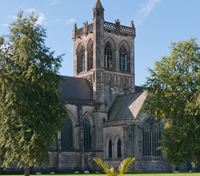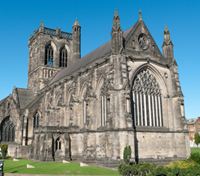Paisley Snapshots , Paisley Abbey
Paisley Abbey
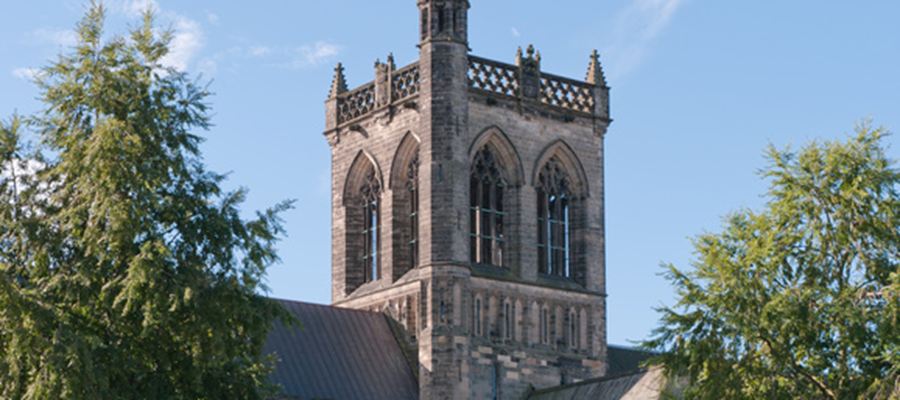
The town has monastic origins and grew on the site of an ancient chapel dedicated to St Mirin, the man widely credited with bringing Christianity to west Lowland Scotland in the sixth century and who later became the patron saint of Paisley. The first authentic reference to Paisley was in 1157, when King Malcolm IV granted a charter in favour of Walter Fitzalan, the son of Allan, High Steward of Scotland, and founder of the Stewart dynasty, confirming gifts which King David had conferred on his favourite Lord, the Saxon Walter. Lands called Passeleth formed part of those gifts. Thereafter, Walter signed a charter at Fotheringay for the founding of a Cluniac monastery on the east bank of the river, close to the shrine of St. Mirin. He also provided the monks with a net for fishing salmon, and a boat and six nets for fishing herring. In 1219, the building was erected into an abbey and, in 1245, the priory was formally raised to the status of Abbey, answerable only to the pope in Rome. The Abbey was dedicated to St. Mary, St. James, St. Mirin, and St. Milburga (the 'local' saint of Wenlock, the place where the first Cluniac monks originated).
Few people lived on the land near to where the monastery was founded, but the opposite river bank was soon occupied by the monks’ retainers and tenants and a thriving village developed. In 1488 the village further grew when Abbot George Shaw, who had sided with the rebellious nobles against James III, was rewarded with a charter creating the village of Paisley a free burgh of barony with:
…the full and free liberty of buying and selling in the said burgh, wire, wax, woollen and linen cloths, wholesale or retail, and all other goods and wares coming to it; with power and liberty of having and holding in the same place, bakers, brewers, butchers, and sellers both of flesh and fish, and workmen in the several crafts, . . . likewise to possess a cross and market for ever, every week, on Monday, and two public fairs yearly, for ever; namely one on the day of St Mirren, and the other on the day of St Marnoch.
Two years later, in 1490, the abbot and chapter granted to the magistrates of the burgh in feu-farm (the right to rent) the ground on which the old town stands, and certain other privileges. This gave rise to long-standing hostilities with the neighbouring burgh of Renfrew, to which the Paisley people had formerly been subject.
Though early records are scant, the documents detailing the granting of burgh status provide a useful indication of the types of trade being conducted in Paisley during the late 15th century, which included linen cloth and woollens. Manufacturing and trade grew gradually, and by 1695, the population was given as 2200, with contemporary authors noting that boats carried Highland timber and slates (probably from Ballachulish or Easdale) to Paisley and left carrying coal and lime, both of which were extracted locally
